Top 10 Desert Island Recordings, for Now…
People sometimes ask who my favorite composer is, or what my favorite piece of music is. I don’t have a favorite anything, so I tend to go blank when asked these questions. There is simply too much to choose from, especially with classical music. I also tend to be in the moment with music. So, if I’m listening to Rachmaninov’s Piano Concerto No. 3 or his Symphony No. 2, those are my favorites. Listening to Prokofiev’s Violin Concerto No. 2, I almost always decide that the Russians are my favorite composers until I hear Bruckner’s 4th symphony or Elgar’s Cello Concerto. We are always changing and evolving, and our likes and dislikes tend to ebb and flow, at least mine do. However, If I were faced with the prospect of having to choose only 10 recordings to take with me onto a secluded radio-less, iPod-less desert island, here are my choices…at the moment, and for the time being in no particular order.
- The Brahms Symphony No. 4 is not my absolute favorite of his 4 symphonies, but this performance of it rocked my world when I first heard it. I had listened to the Symphony No. 4 many times, but Carlos Kleiber compelled me to hear it. You can almost feel Brahms’s sheer force of will shattering insecurity and bursting forward in the opening movement of his Symph
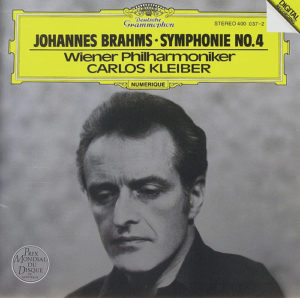 ony No. 1. But then in his 4th symphony, he is experienced and melancholy but also self-assured. Self-assurance and knowing, in my opinion, are the qualities that Kleiber brings to the performance making it a desert island recording. There’s also a bit of that “limited edition” feel which can be irresistible in that Kleiber’s recordings are few and far between.
ony No. 1. But then in his 4th symphony, he is experienced and melancholy but also self-assured. Self-assurance and knowing, in my opinion, are the qualities that Kleiber brings to the performance making it a desert island recording. There’s also a bit of that “limited edition” feel which can be irresistible in that Kleiber’s recordings are few and far between.
- August 19, 1990 turned out to be Leonard Bernstein’s last public perfo
 rmance, and we have it for posterity on this Deutsche Grammophon recording. The Symphony No. 7 is one of my favorite Beethoven symphonies, and this recording introduced me to the four “Sea Interludes” from Britten’s opera “Peter Grimes.” The performances are maybe not “perfect,” there is a lot of ambient noise but the spirit and energy of this recording never fail to take my breath away.
rmance, and we have it for posterity on this Deutsche Grammophon recording. The Symphony No. 7 is one of my favorite Beethoven symphonies, and this recording introduced me to the four “Sea Interludes” from Britten’s opera “Peter Grimes.” The performances are maybe not “perfect,” there is a lot of ambient noise but the spirit and energy of this recording never fail to take my breath away.
3. At some point my dad had heard and had fallen in love with “Amazing Grace” sung by Judy Collins from “Whales and Nightingales,” so my mother gave my dad the LP for Christmas. This one I had to grow into. It didn’t help that my dad played “Whales and Nightingales” all the time. It became almost a soundtrack in our household for an interminable amount of time. Of course I was a child, and time was much longer then. Ironically, Bob Dylan’s “Time Passes Slowly” is one of the songs on the recording. 😉 When I reached my teens, “Whales and Nightingales” became my right of passage into the world of music, on my own terms. With the help and influence of Judy Collins, who had studied to be a classical pianist in her teens, crossover musician, conductor and pianist, Joshua Rifkin did some gorgeous arrangements blending folk with classical music. Back then and to this day the H umpback whale’s song, “Farewell to Tarwathie” makes me sad, so I tend to skip it. There are Humpback whales communicating with one another, and their voices and the song are beautiful but heartbreaking to me. The recording introduced me to Jacques Brel, Pete Seeger, Bob Dylan and the old American song, “Simple Gifts.” It has a little bit of everything, and I will never tire of it.
umpback whale’s song, “Farewell to Tarwathie” makes me sad, so I tend to skip it. There are Humpback whales communicating with one another, and their voices and the song are beautiful but heartbreaking to me. The recording introduced me to Jacques Brel, Pete Seeger, Bob Dylan and the old American song, “Simple Gifts.” It has a little bit of everything, and I will never tire of it.
- The Oxford Dictionaries defines the Danish term/idea “Hygge” as, “A quality of cosiness and comfortable conviviality that engenders a feeling of contentment or well-being.” I believe Hygge is my state of being when I experience Glenn Gould’s 1955 recording
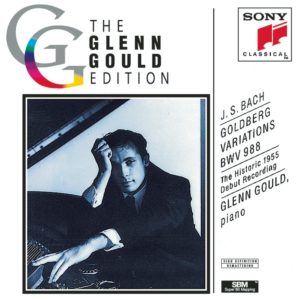 of J. S. Bach’s “Goldberg Variations.” Gould’s performance was my introduction to this journey for the ears, mind and soul. There may be better, cleaner recordings but this one has a permanent place in my heart.
of J. S. Bach’s “Goldberg Variations.” Gould’s performance was my introduction to this journey for the ears, mind and soul. There may be better, cleaner recordings but this one has a permanent place in my heart.
5. “The Orange Recording” is how I refer to the magical collaboration bet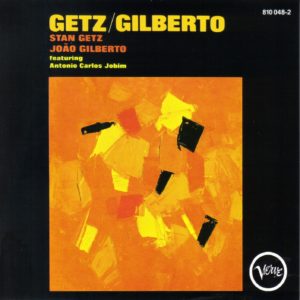 ween saxophonist, Stan Getz, Brazilian guitarist and singer João Gilberto, the great Brazilian composer and pianist Antônio Carlos Jobim and the lady who, in my opinion, defined the airy, slightly off key singing style of the bossa nova, Astrud Gilberto. The now iconic, abstract image on the cover by the artist Olga Albizu beacons you into the world of samba and bossa nova, and you won’t want to come back! I even love the grammatical idiosyncrasies in “The Girl from Ipanema.” I don’t ever want to be without Getz/Gilberto.
ween saxophonist, Stan Getz, Brazilian guitarist and singer João Gilberto, the great Brazilian composer and pianist Antônio Carlos Jobim and the lady who, in my opinion, defined the airy, slightly off key singing style of the bossa nova, Astrud Gilberto. The now iconic, abstract image on the cover by the artist Olga Albizu beacons you into the world of samba and bossa nova, and you won’t want to come back! I even love the grammatical idiosyncrasies in “The Girl from Ipanema.” I don’t ever want to be without Getz/Gilberto.
6. Gabriel Fauré’s Requiem has the uncanny ability to sweep itself into my conscious mind or gently soothe me in the background. It’s never presumptuous or demanding. It is memorable and always comforting. Fauré’s Requiem is different because that is what he intended it to be. As organist for La Madeleine church in Paris, Fauré became tired of playing the same funeral mu sic over and over. Fauré decided to do something about it, and he wrote his great Requiem. Robert Shaw leading the Atlanta Symphony and Chorus is a tried and true performance, and I’m taking it with me to my desert island.
sic over and over. Fauré decided to do something about it, and he wrote his great Requiem. Robert Shaw leading the Atlanta Symphony and Chorus is a tried and true performance, and I’m taking it with me to my desert island.
7. A few days ago I was in a hair salon where they were playing Pandora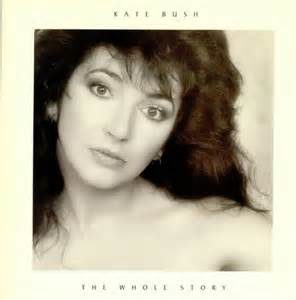 or something along those lines. The music was a mix of contemporary alternative rock. As I was leaving, much to my surprise, the English singer Kate Bush came on the speakers singing her 1978 debut single, “Wuthering Heights.” The receptionist, a young woman of maybe 20, commented on how “weird” the song was. Kate Bush is weird and wonderful! She has never fit into any format, and she will remain timeless and offbeat. In college my worldly friend Sally introduced me to a greatest hits recording by Kate Bush, “The Whole Story.” We felt hip and cool drinking coffee till all hours and listening to “Wuthering Heights,” “Breathing,” “Cloudbusting” and all of the poetic and experimental offerings by a treasure of an artist/musician.
or something along those lines. The music was a mix of contemporary alternative rock. As I was leaving, much to my surprise, the English singer Kate Bush came on the speakers singing her 1978 debut single, “Wuthering Heights.” The receptionist, a young woman of maybe 20, commented on how “weird” the song was. Kate Bush is weird and wonderful! She has never fit into any format, and she will remain timeless and offbeat. In college my worldly friend Sally introduced me to a greatest hits recording by Kate Bush, “The Whole Story.” We felt hip and cool drinking coffee till all hours and listening to “Wuthering Heights,” “Breathing,” “Cloudbusting” and all of the poetic and experimental offerings by a treasure of an artist/musician.
8. Leonard Bernstein believed that his musical spirit was a reincarnation of or somehow related to Mahler’s musical soul. Listening to Bernstein’s recording of Mahler’s Symphony No. 5 with the Vienna Philharmonic has made a believer out of me. There are some issues with the live ambient sounds, but they do not detract from this profound musical connection one can hear between Bernstein and Mahler. I could and have listened to the Adagietto all by itself on repeat from this jewel.
9. I discovered and fell for The Velvet Underground in the early 2000’s. I was vaguely familiar with Lou Reed and I had heard of the German singer Nico who is on their debut release. She also  had a bit part in Federico Fellini’s “La Dolce Vita.” Classically trained musician John Cale played the viola producing a drone effect which gave the group an unusual, dark sound. “The Velvet Underground & Nico” was recorded concert material from Andy Warhol’s Exploding Plastic Inevitable multimedia tour. Today this is all pretty tame stuff, but at the time it must have raised eyebrows. Underground is a fitting name for the group as they are surprisingly and undeservingly overlooked and overshadowed by rock groups from the past.
had a bit part in Federico Fellini’s “La Dolce Vita.” Classically trained musician John Cale played the viola producing a drone effect which gave the group an unusual, dark sound. “The Velvet Underground & Nico” was recorded concert material from Andy Warhol’s Exploding Plastic Inevitable multimedia tour. Today this is all pretty tame stuff, but at the time it must have raised eyebrows. Underground is a fitting name for the group as they are surprisingly and undeservingly overlooked and overshadowed by rock groups from the past.
10. Sometimes but not often a great piece of music has bec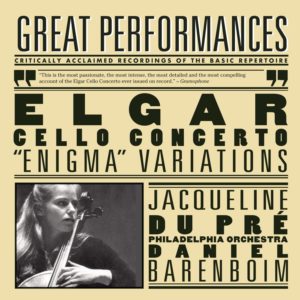 ome intertwined with a musician or maybe vice versa. Jacqueline du Pré’s performance of Elgar’s Cello Concerto makes me wonder if the composition itself had been waiting for her to come along as its soul mate. This particular Cello Concerto says a lot in a good musician’s hands, but it comes alive with Jacqueline du Pre.
ome intertwined with a musician or maybe vice versa. Jacqueline du Pré’s performance of Elgar’s Cello Concerto makes me wonder if the composition itself had been waiting for her to come along as its soul mate. This particular Cello Concerto says a lot in a good musician’s hands, but it comes alive with Jacqueline du Pre.

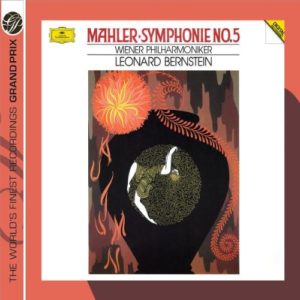





4 Responses to Top 10 Desert Island Recordings, for Now…